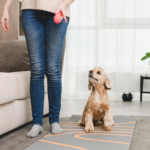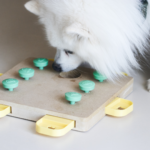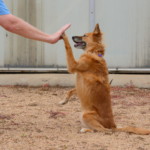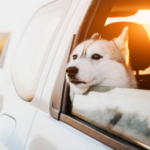Introduction
Embark on a journey of canine adventures with your furry companion! The significance of planning the perfect dog-friendly outing goes beyond a simple walk; it’s about creating lasting memories and strengthening the bond with your four-legged friend. This article serves as your guide to orchestrating a delightful day out for both you and your beloved pup.
Choosing the Right Destination
Safety First: Prioritize your dog’s safety by opting for destinations with well-defined pet-friendly areas. Research venues that have a reputation for being accommodating to canine companions. Look for spaces with secure fencing, clear signage, and designated off-leash areas. Ensure the chosen location aligns with your dog’s comfort level, especially if they’re still in the process of socialization.
Crowded Spaces and Restricted Areas: Consider the potential challenges posed by crowded places and restricted zones. Dogs may feel overwhelmed in bustling environments, leading to stress or anxiety. Additionally, some areas may have restrictions on pets, limiting your freedom to explore. To address these issues, plan your outing during off-peak hours to avoid crowds. Research local regulations and guidelines to identify any restrictions, ensuring a seamless and lawful experience.
Research Pet-Friendly Venues: Before setting out, conduct thorough research on pet-friendly venues in your chosen location. Look for parks, beaches, or events that explicitly welcome dogs. Many places offer amenities such as dog-friendly trails, water features, or even designated play areas. Some cities have cafes and restaurants with outdoor seating where dogs are welcome. Utilize online resources, pet-friendly travel apps, or local community groups for recommendations from fellow pet owners.
Catering to Specific Needs: Every dog is unique, and their needs may vary. Consider your dog’s personality, energy level, and any specific requirements they may have. For instance, an older dog might prefer a quieter location, while an energetic pup may thrive in a more active setting. By tailoring the destination to your dog’s individual needs, you ensure a positive and enriching experience for both of you.
Essentials for a Tail-Wagging Time
Water Bowls: Staying hydrated is crucial for your dog’s well-being, especially during outdoor activities. Portable water bowls are a must-have item for any day out. Opt for collapsible bowls that are easy to carry and can be conveniently stored in your bag. Keeping your dog well-hydrated helps prevent dehydration, particularly on warm days or during vigorous activities.
Waste Bags: Responsible pet ownership includes cleaning up after your dog. Be equipped with an ample supply of waste bags to ensure you can promptly and properly dispose of your dog’s waste. Many parks and public spaces provide designated bins for pet waste, promoting cleanliness and environmental responsibility. Carrying waste bags reflects your consideration for the environment and the community.
Comfortable Leashes: A sturdy and comfortable leash is essential for maintaining control and ensuring your dog’s safety during the outing. Choose a leash that suits the activities planned for the day, whether it’s a standard leash for casual walks or a longer one for more freedom in open spaces. Ensure the leash is in good condition, free from frays or weaknesses that could compromise its effectiveness.
Weather-Appropriate Gear: Unpredictable weather can pose a challenge during outdoor excursions. Pack weather-appropriate gear, such as a lightweight raincoat for sudden downpours or a cozy sweater for cooler temperatures. Protect your dog from the elements to keep them comfortable and content throughout the day.
Proper Identification: Accidents happen, and in unfamiliar environments, it’s crucial to have proper identification for your dog. Ensure your pet is wearing a secure collar with an updated ID tag containing your contact information. In the unfortunate event that your dog gets separated from you, proper identification increases the chances of a quick and safe reunion.
Socialization Strategies
Understanding Leash Aggression and Shyness: Leash aggression and shyness are common challenges faced by dogs during socialization. Leash aggression may stem from the restraint of the leash, making dogs feel vulnerable and triggering defensive reactions. On the other hand, shyness can be a result of fear or past negative experiences. Recognizing these issues is the first step toward creating a positive socialization experience.
Gradual Exposure: One effective strategy is to expose your dog to new environments and other dogs gradually. Begin with controlled settings where you can manage the level of interaction. For leash-aggressive dogs, introducing them to neutral territories without immediate contact can help alleviate tension. Similarly, shy dogs benefit from gradual exposure to build their confidence over time.
Positive Reinforcement Techniques: Utilize positive reinforcement to encourage desirable behaviors during socialization. Reward your dog with treats, praise, or affection when they exhibit calm and friendly behavior. This positive association helps reshape their perception of new experiences and interactions. For instance, if your dog tends to display leash aggression, reward them for walking calmly without aggressive reactions.
Structured Playdates: Organize structured playdates with well-behaved dogs in a controlled environment. This allows for positive interactions under supervision, promoting social skills and reducing anxiety. Choose dogs that have a calm temperament to create a positive influence on your dog’s behavior.
Professional Training Assistance: For persistent socialization challenges, consider seeking the assistance of a professional dog trainer or behaviorist. They can provide personalized guidance based on your dog’s specific needs and behaviors. Professional trainers use their expertise to address issues and implement effective training techniques.
Paws and Pause: Creating Restful Moments
Understanding Canine Needs: Dogs, regardless of their energy levels, need breaks to recuperate. Overstimulation from new environments, sights, and sounds can lead to stress and exhaustion. Recognizing your dog’s signals for fatigue, such as slowing down, seeking shade, or even lying down, is crucial. Understanding their needs allows you to create a well-balanced and enjoyable experience for both of you.
Challenges of Overstimulation: Overstimulation can manifest in various ways, including restlessness, anxious behavior, or even irritability. If your dog is exposed to constant stimuli without breaks, it may impact their overall well-being and hinder the enjoyment of the outing. Acknowledging these challenges is the first step toward creating a dog-friendly experience.
Solutions for Restful Breaks: To address overstimulation and fatigue, incorporate shaded rest areas into your outing plan. Look for quiet spots away from crowded areas where your dog can take a breather. Bring along a comfortable blanket or mat, providing a designated space for your furry friend to relax. Ensure access to fresh water during these breaks to keep them hydrated and refreshed.
Balancing Play and Rest: A successful outing involves a balance between play and rest. Pay attention to your dog’s cues, allowing them to dictate the pace of the day. Short breaks between activities can make a significant difference, ensuring your dog remains engaged and content throughout the adventure.
Health and Safety Measures
Vaccinations Matter: Before venturing into public spaces, ensure your dog’s vaccinations are up-to-date. Vaccinations protect them from contagious diseases that can be encountered in communal areas. Core vaccines, including those for rabies and distemper, are essential to safeguard their health. Regular vet check-ups will help you stay informed about your dog’s vaccination schedule.
Tick Prevention: Ticks pose a threat to your dog’s health, and prevention is key. Explore reputable tick prevention methods, such as spot-on treatments, collars, or oral medications. These measures not only protect your dog from tick-borne diseases but also contribute to a stress-free outing. Regularly check your dog for ticks during and after your adventure, especially in grassy or wooded areas.
Emergency Preparedness: Accidents can happen, so being prepared for emergencies is crucial. Create a doggy first aid kit with essentials like bandages, antiseptic wipes, and any necessary medications. Familiarize yourself with emergency vet clinics in the area you plan to visit. Having a list of emergency contacts, including your vet’s number and local animal poison control, ensures swift action in case of unforeseen circumstances.
Conclusion
Planning a dog-friendly day out requires thoughtful consideration, but the rewards are immeasurable. From fostering a deeper connection with your furry friend to creating lasting memories, a well-planned outing enhances the overall well-being of your pet. Remember, every dog is unique, so tailor your plans to cater to their specific needs and preferences. With the right preparation, you’re not just going on an outing; you’re creating an adventure both you and your canine companion will cherish. So, leash up, explore, and make every day out a tail-wagging success!









